Essex County
Most tourists heading north from Boston regard Maine as their next destination, with maybe a stop in Salem because they have heard of the witch trials that were held there. The area between Boston and the New Hampshire border is Essex County and it is well worth spending some time there. The coast here is wild and rocky and the county has towns and villages filled with historic buildings.
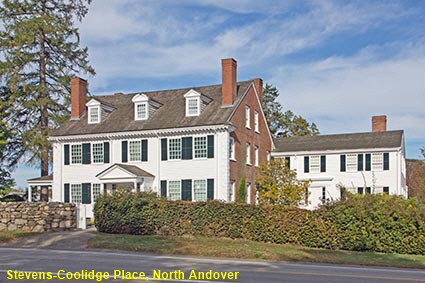
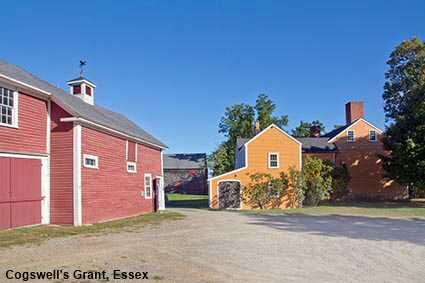
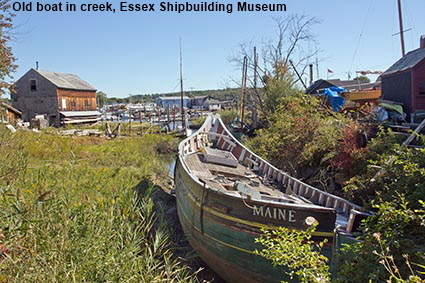
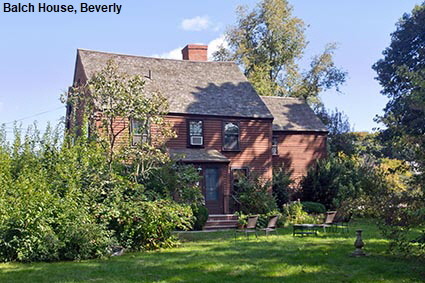
DLU171007
Click on Minimap to navigate
Home > US States > New England > Massachusetts >


Balch House, Beverly
Settlers first arrived here in 1626 and records show that John Balch and his wife were living here by 1636. The original structure no longer exists, the oldest part of the building that stands today is the north east section which is thought to have been built by Benjamin Balch in the 1680s. The house was extended in 1721 and again around the end of the 19th century. The house remained in the Balch family until 1916 when ownershio passed to the Balch Family Association. Working with Historic Beverly, the Association has restored the house. The Balch House is open to the public in season. During our tour we were guided around the house by a descendant of the Balch family. Click Tab 2 to see the parlor of the Balch House
Cogswell's Grant, Essex, MA, USA
John Cogswell was born in 1592 at Westbury Leigh in Wiltshire, England. In 1635 he emigrated to New England with his wife and eight children. They survived a shipwreck and in 1636 Cogswell was given a grant of 120 hectares (300 acres) of land near to the modern day town of Essex. He established a farm on the land named ‘Westberry Lee’ after his birthplace in England. The Cogswell family owned the land until 1839. The farm was then purchased by Essex shipbuilder Adam Boyd. He lost ownership for a short time due to bankruptcy, but bought it back and it remained in his family until 1925. New owners put tenants in the farm and it became run down. In 1937 the farm was purchased by Bertram K. and Nina Fletcher Little, prominent collectors of American folk art. They traced the history of the property back to the original land grant, so they renamed it ‘Cogswell’s Grant’ and used it as their summer home and to house some of their collection of folk art. They restored many original features of the property while adding modern facilities such as plumbing and electricity. When the Little’s died in 1993, they had already gifted the property to Historic New England. Cogswell’s Grant is now open to the public as museum and historic house.
Old boat in creek, Essex Shipbuilding Museum
European settlers arrived here in 1634. There settlement on the banks of the Essex River grew into a shipbuilding centre where more two-masted wooden fishing schooners were built than at any other place in the world. Essex was originally part of nearby Ipswich but in 1819 it was incorporated as a town in its own right. By the end of World War II shipbuilding in Essex had largely died out. In 1976 the Essex Shipbuilding Museum was set up to keep alive the history of shipbuilding in Essex. In 1990 the museum purchased the Evelina M. Goulart one of only seven Essex built schooners still in existence. In 1993 the former Story shipyard was purchased as a site for the museum. When we visited in 2013 there were a lot of historical artefacts to be found in the museum, but it was a rather chaotic cross between a junkyard and a museum. Click Tab 2 to see a general view of the museum, on the left a sadly dilapidated Evelina M. Goulart.
Stevens-Coolidge Place, North Andover
Andover was settled in 1642 and became an incorporated town in 1646. In 1692 during the Salem Witch Trials, three Andover residents were executed after being convicted of witchcraft. In 1709 the town split itself in two; a new meeting house have been established in the south of the town so the part of the town centred on the original meeting house became North Andover. The Stevens family acquired Ashdale Farm, North Andover in 1729 and they farmed the land for many generations. Helen Stevens inherited the property before she married diplomat John Gardner Coolidge. They made the farm their summer home. From 1914 they transformed the farm into a country estate, converting the farmhouse buildings into a Colonial Revival style home and creating a series of gardens. When Helen Stevens Coolidge died in 1962 she left the property to the Trustees of Reservations who preserve properties for the enjoyment of the public. The gardens at Stevens-Coolidge Place are open daily year-round but the house is only open for special events Click tab 2 to see a picture of the Kitchen-Cutting Garden.
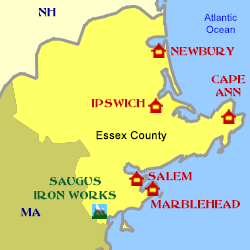
To move forwards or backwards through the Massachusetts trail click the arrows above. We have other pages on Essex County. Click below or on the Minimap:

John Greenleaf Whittier Home, Amesbury
John Greenleaf Whittier was a Quaker born on a farm in Haverhill, Massachusetts in 1807. He was a frail child and was not cut out for farming, especially because he was colour blind and could not tell the difference between ripe and unripe fruit. At school a teacher introduced him to poetry, and as an adult he became a poet and, following his Quaker beliefs, a fierce advocate of the abolition of slavery. In 1836 he bought this house in Amesbury to live in with his mother, aunt, and sister Eliza. The house dates back to 1811 and Whittier lived there until his death in 1892. It was in this house that Whittier wrote his best known poetry and prose. The John Greenleaf Whittier House is now owned by the Whittier Home Association who have preserved it as it was in the poet’s day. It is open to the public as a museum on Saturdays between May and October. Unfortunately, we were in Amesbury on a Friday so we were not able to view the interior.
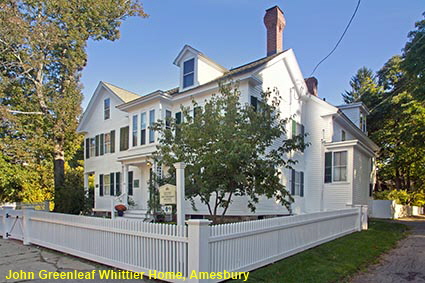
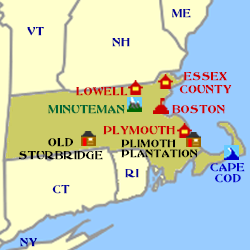
© Mike Elsden 1981 - 2025
The contents of this page may not be reproduced in full or in part without permission